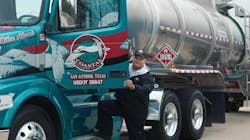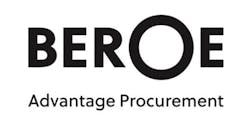The shortage in the number of truck drivers is expected to deepen in the U.S. by the year 2026 in a development that subsequently will influence rates, according to Beroe Inc., a North Carolina-based provider of procurement intelligence and supplier compliance solutions.
There are approximately 63,000 vacant truck-driving jobs in the bulk tanker market today, the company said, and the global tanker trucks market is predicted to need 174,000 new truckers by 2026. This kind of decline affects rates due to a capacity shortage. But the new drivers are coming up, which could radically help balance the short-term market in 2020-21.
In comparison to Class 1 railroads, which employed approximately 165,000 people in 2017, the trucking industry employed more than 1.8 million drivers, a number 10 times higher. The American Trucking Associations estimates the current driver shortage of 63,000 could surge significantly in the next five years unless intervened with proper steps.
The first cause for the shortage is demography.As the shortage in freight rates increases to a considerable amount in 2020-21, shippers are advised to support all trucking companies by adapting to alternative transportation methods and using technology like autonomous trucks, helping absorb additional costs, Beroe maintained.
There is no single solution that will help with the shortage because it comes with complexities. For most truckers, higher pay and incentives need to be on the cards to ensure higher retention. Big retailers have increased drivers’ hourly pay, which now comes with several benefits like welfare schemes, and medical and recreational services. Most trucking companies have started optimizing shipping routes and using technology to improve drivers’ lives to ensure they spend less time on the road.
Companies now should also reach out to women, minorities and veterans to take up the wheel and bring down the present and expected shortage. Change in shift patterns to improve schedules that prevent unsocial hours is another course of action recommended to mitigate driver shortage issues. Driverless Class 8 trucks are in the pipeline now, and the technology is being developed. Driver-assist technology for heavy tractor-trailers will be a boon and make the job less stressful, reducing the high attrition rates. The bend on technology also will attract a younger crowd toward the profession.
Key findings
- When it comes to the U.S. Midwest, the situation is terrible regarding the driver shortage. The problem is spread along the East Coast, including in Texas and Louisiana.
- Fuel-tanker trucks market procurement trends show that large carriers compete with the small and mid-sized companies for truck drivers, who pay higher than the industry standards. This leads to an increase in wages.
- According to ATA, the trucking industry today needs more than 1.1 million new drivers in the next 10 years.
- Retirement and industry growth are factors that are needed for the future driver demand.
- Most major 3PL companies give out in-house training and lucrative apprenticeship programs that help bring in new talent into the dry bulk and tanker markets. It also keeps the impact of any shortage of drivers to a minimum.
The report from Beroe includes:
- U.S. bulk chemical transportation market overview and insight
- Major operating cost drivers
- Overview on truck driver shortages, truck driver capacity, and wages
- The course of actions to mitigate the driver shortage issues
- Overview on truck driver capacity and wages
- Bulk trucking cost structure in the U.S.
- Key suppliers
- U.S. market trends
- Post COVID-19 global logistics market projections
Procurement experts can access the Beroe report at beroeinc.com/beroe-live-ai.

